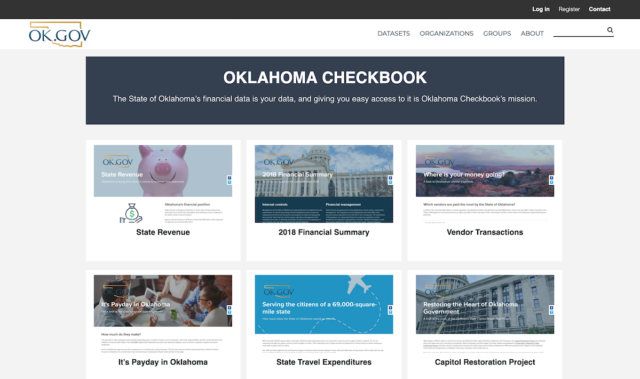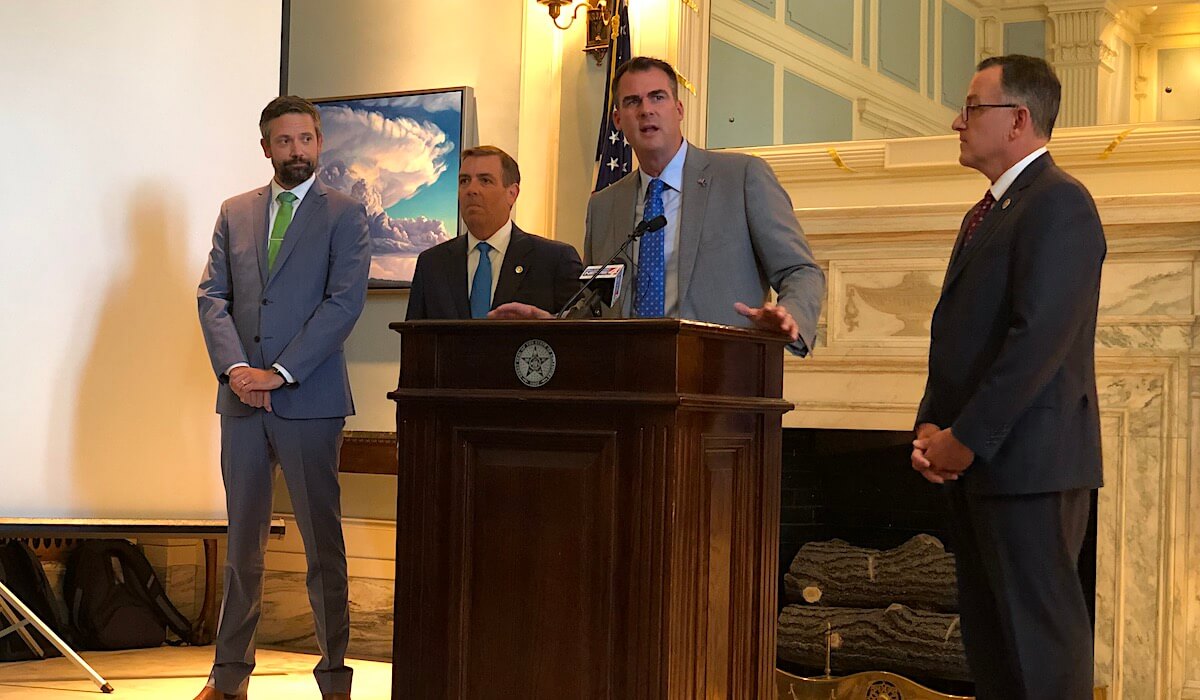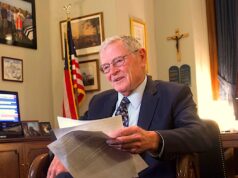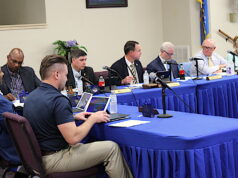

When Oklahoma Secretary of Digital Transformation and Administration David Ostrowe started reviewing data accumulated as part of the new Oklahoma Checkbook system, he was startled.
“Personally, as a citizen and taxpayer of Oklahoma, I was shocked on the travel,” Ostrowe told media this afternoon ahead of the official system rollout. “Considering we have an executive order on non-essential travel — I know what our travel is like — but apparently other people in this state didn’t get the memo.”
Oklahomans will be able to do far more than read a memo about state finances with the new Oklahoma Checkbook, which is aimed at increasing fiscal data transparency in the state.
“We can all talk about fixing things, but if you don’t have the transparency to see what’s wrong, it’s hard to step in,” Ostrowe said.
Accessible at checkbook.ok.gov, the Oklahoma Checkbook features 12 primary topic areas on its homepage, including: state revenue, 2018 financial summary, state travel expenditures and an Oklahoma real property asset report. The site features filter options and other interactive opportunities for users. Filtered data sets can be shared by simply copying and pasting the URL.
“This is government accounting. This is not simple stuff. But this is designed in a way where the average citizen can get into it,” said Dave Swanson, project lead for OpenGov, the company working with the Oklahoma Office of Management and Enterprise Services to create the Oklahoma Checkbook and revamp data.ok.gov. (Ostrowe said the two pages will be merged eventually.)
Swanson praised OMES staff, which pleased Ostrowe.
“Everybody write that down,” Ostrowe said with a laugh. “A third-party vendor said OMES is great. Put a star by it.”
‘All taxpayers should see dollars coming in and how they are spent’

Gov. Kevin Stitt has made transparency and government reform priorities of his administration since taking office in January. Legislative leaders granted his request to reform the hiring process for five major state agencies. Lawmakers also created their own new budget wing called the Legislative Office of Fiscal Transparency or LOFT.
“With this transparent OpenGov platform, it is very interactive, and visually you are going to be able to go through and help us hold state government to the mission that they are supposed to be doing,” Stitt said Wednesday. “When you inspect things, when you shine a light on it, it gets more transparent.”
Senate Appropriations and Budget Chairman Roger Thompson (R-Okemah) told NonDoc that the combination of LOFT and the new Oklahoma Checkbook system “will make a visible difference in the budgeting process.”
“The value of more transparency has two major components regarding the budgeting process,” Thompson said. “First, all taxpayers should see dollars coming in and how they are spent. Second, this program will require all agencies to input all of their income and expenditures at a deep level. This is very valuable to those who work on the various agency budgets year around. This will give us more information at one source.”
State Treasurer Randy McDaniel said at Wednesday’s press conference that the Oklahoma Checkbook will shine a light on state government.
“It’s absolutely the right thing to do: Openness, transparency, accountability,” McDaniel said. “Over the years, as technology has continued to improve, there has been initiatives. But what I think is nice about this is it is more robust and more broad.”
Ostrowe asked the public and members of the media to offer feedback when using the new site, which he had hoped would be done by May 31.
“We were there, but it was bad data. As much as I wanted to hit my deadline that I imposed on myself and committed to the governor, there was no way we were going to put out bad data,” Ostrowe said. “This data has been massaged, it balances. My commitment is that if there’s a mistake, it will be fixed within 24 hours. It won’t be two years like the previous site.”
Ostrowe said he presented the Oklahoma Checkbook site to state agency directors last week.
“They were looking at their data, and they said, ‘We’ve got to fix this,’ and we said, ‘You’ve got all weekend,'” Ostrowe relayed. “I think it’s going to be an overwhelming positive response. I can tell you from our perspective, we found out things we didn’t know. This is literally a very bright light shining in very dark places.”
He noted that the “checkbook” site was still in its initial stage and that more advanced information will ultimately become available as state finance software is upgraded. He said the OMES and OpenGov teams are currently working on a project related to Oklahoma education.
“Right now, if you wanted to compare schools between two schools, each school has a 300-page report,” Ostrowe said. “I don’t know how you would ever read 600 pages to make a decision for your child. So we are trying to figure out how to present that data in a way that people would want.”
Others offer statements on Oklahoma Checkbook
State Chamber of Oklahoma President and CEO Fred Morgan released a statement Wednesday that said Stitt was delivering on a campaign promise of greater transparency.
“This new digital state checkbook goes hand in hand with the accountability and transparency measures championed by the State Chamber’s OK2030 strategic plan that passed during the 2019 legislative session: creating the Legislative Office of Fiscal Transparency (LOFT) and expanding direct appointments of the governor,” Morgan said.
House Appropriations and Budget Chairman Kevin Wallace (R-Wellston) also praised the new website.
“As a lawmaker, a taxpayer and just a concerned Oklahoma resident, I’m happy to see this new level of accountability and transparency showing in a simplified format how much taxpayer money flows into state agencies and how and where that money is spent,” Wallace said. “With all Oklahomans able to examine this information, we will have many more eyes on state spending and can have a much broader dialogue about our priorities as well as see areas where we might wish to tighten our spending or redirect our resources to areas of greater need.”
(Update: This story was updated at 5:55 p.m. Wednesday, June 12, to include quotes from Morgan and Wallace.)




















